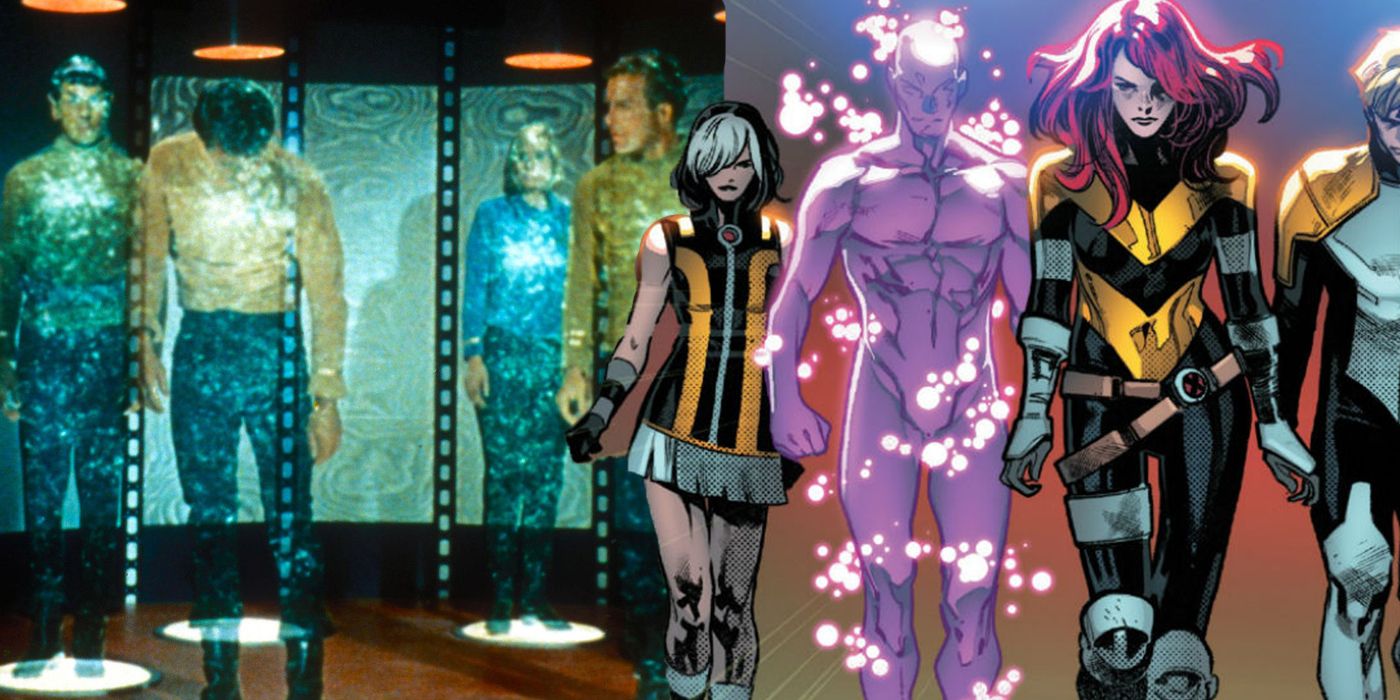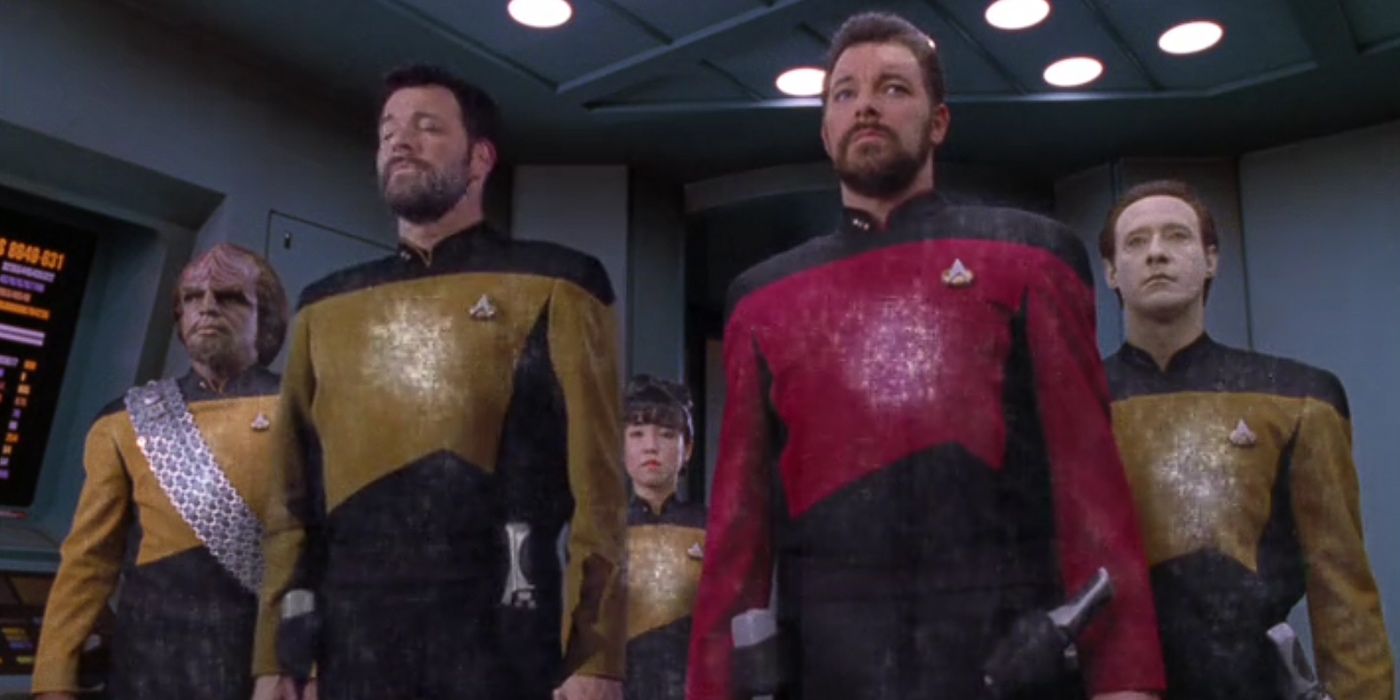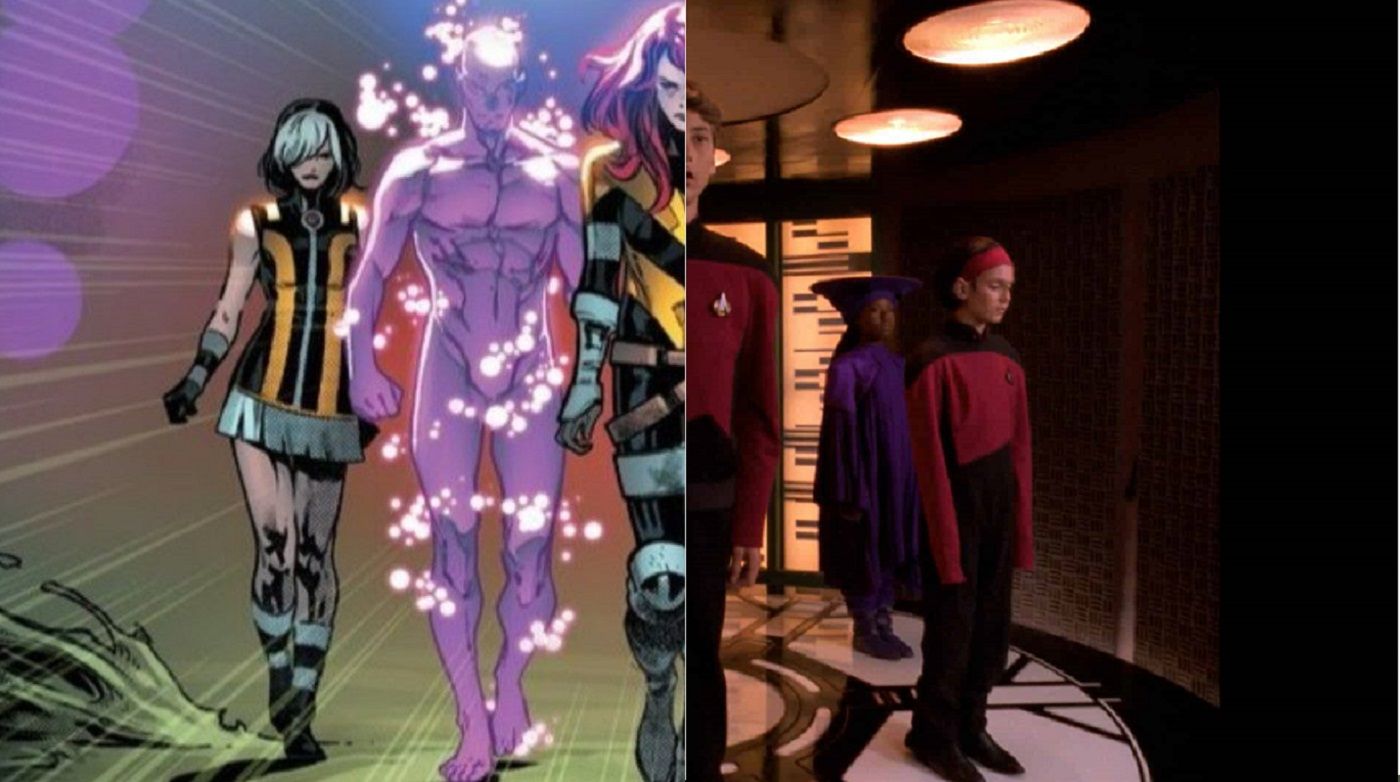The X-Men have a major ethical problem on their hands. Professor X devised a way to bring any and every mutant back from the dead, so that's good news right? Not quite. Empyre: X-Men #4 reveals that the mutants may not have even brought anyone back at all, and all those revived remain dead. At the very least, it is a philosophical possibility.
The series House of X and Power of X revealed that Professor X was using five different mutant's powers to quick-age a clone and then download a copy of the dead mutant's memories onto the clone. For a while, this system went off without a hitch. Then, the Scarlet Witch, tortured by the death of 16 million mutants on Genosha, attempted her own resurrection spell. After all, there are only so many people “the Five” (the five mutants used in the resurrection process) can bring back in a given time period. Unfortunately, the spell went wrong and all 16 million were raised as flesh-hungry zombies...but with all their mutant powers and memories intact.
So, there are some mutants resurrected as clones on Krakoa, and some mutants resurrected as Zombies on Genosha. What's the problem then? The problem is duplicates. Empyre: X-Men #4 reveals that Explodey Boy had been resurrected twice: once by the Scarlet Witch on Genosha and once by the Five on Krakoa. Both had Explodey Boy memories up to the moment they died... leading to the question, which one is the real Explodey Boy? The mutant method of resurrection has the same ethical problem as the Star Trek transporter. To review, the Star Trek transporter scans a crew member, takes apart their molecules, and reassembles them somewhere else. Or does it? In The Next Generation episode "Second Chances,” the Enterprise discovers a duplicate of William Riker was created by a transporter accident and stranded on an alien world. Both of them believed themselves to be the real William Riker. Both of them had the same memories (up until the point of the accident) and the same DNA. So which one was the real one?
Philosophies aside, if the X-Men resurrections or Star Trek transporter couldn't make duplicates, this question might not come up. After all, the human body replaces its cells over time until no original cells remain. So if the transporter uses different atoms, what's the fuss? As long as there is only one claimant to an X-Man's identity, all that matters is the accuracy of the copy. However, the accidental duplication of Explodey Boy reveals Professor X could, if he so chooses, clone an army of Colossus-es (Colossi?) from the same DNA and download the same memories onto each. Similarly, Star Trek could deliberately cause the transporter to malfunction and say, end up with an entire fleet of James T. Kirks. Will the real Captain Kirk please stand up?
Most people would say that someone's essence is held in their soul. Philosophically speaking, a soul is not just a ghost that operates the body like a puppet. Many, such as Aristotle, believed a soul to be the platonic "form" of the body, while the body was the "substance". (Thus, the soul could live on after death if this form was preserved in the mind of God or in the ideal realm of the gods). In other words, everything put together about an individual makes up their soul. However, this just brings us back to our original question framed in a different way: which duplicate has the original soul? Everything about each duplicate that we can measure is the same.
Perhaps, the original Colossus (or Cyclops or Explodey Boy or Shadow Cat or Professor X) is gone for good. Perhaps the original just died, and each new resurrection creates a copy that thinks it is a given X-Man, but isn't. This is disturbing, especially considering that Domino and Colossus considered suicide so they could be resurrected without certain traumatic memories; (wisely, they didn't do this). Also, Professor X allowed himself to be assassinated (temporarily) to galvanize the mutant population of Krakoa. While these are huge ethical breaches—especially if there really is no coming back—most X-Men only use their resurrection technology in the extreme.
The Star Trek transporter though is a much bigger conundrum. The transporter is used every day on the Enterprise. It may have killed a hundred Rikers by now, or a thousand. Perhaps then, it is comforting that such technologies are fictional. However, our nonfiction world is out to figure out the ethics quickly. Science fiction is awfully good at becoming science fact.



